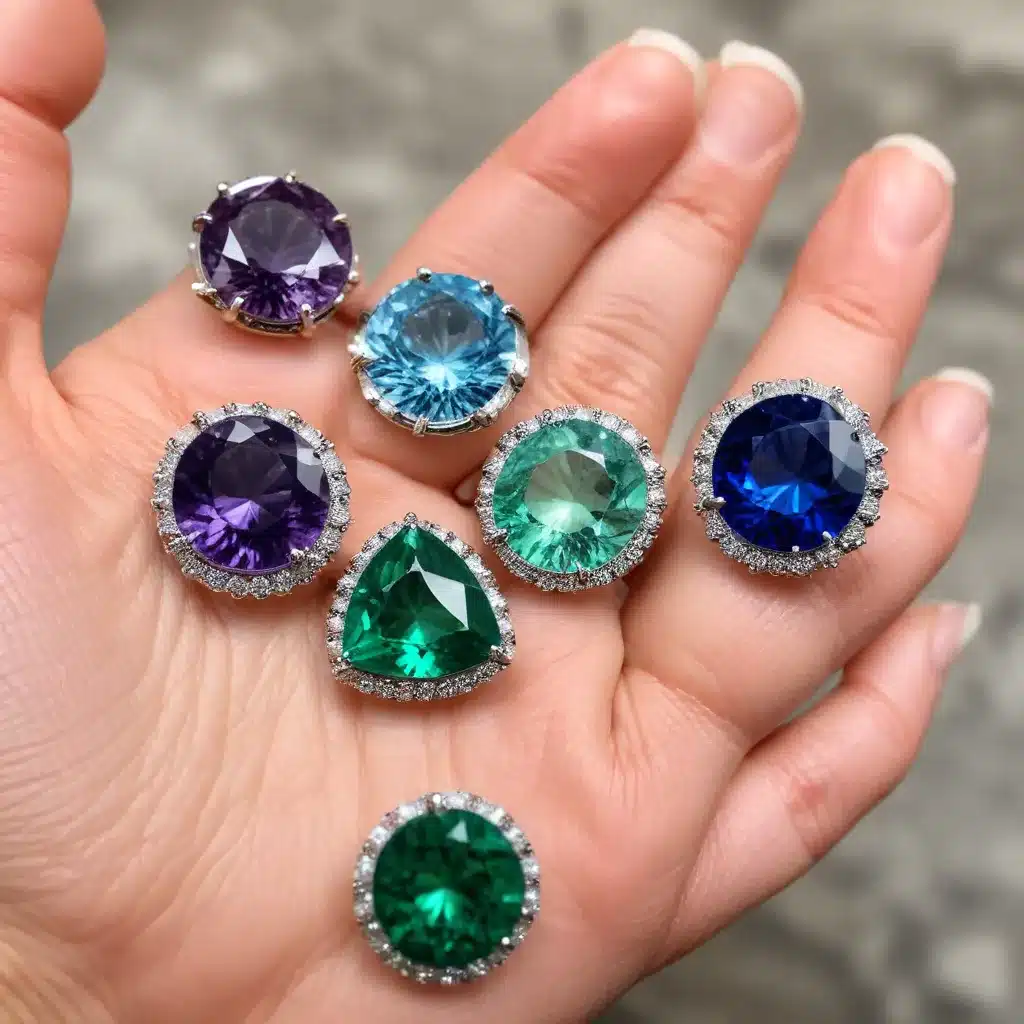
Everyday Gemstone Maintenance: Shelby Gem Factory’s Guidance for Lasting Shine
For those who appreciate the timeless allure of gemstones, maintaining their brilliant radiance is a rewarding pursuit. Whether you’re the owner of a cherished heirloom or a collector of stunning lab-grown specimens, proper care is essential to preserving the investment and sentimental value of your jewelry. As experts at Shelby Gem Factory, we’re here to share our insights on everyday gemstone maintenance – from gentle cleaning techniques to strategic storage solutions and professional restoration methods.
Types of Gemstones
The gemstone universe encompasses a diverse array, from the coveted precious varieties like diamond, ruby, sapphire, and emerald, to the more abundant semi-precious gems like amethyst, citrine, and topaz. In recent decades, the rise of synthetic gemstones has also introduced options like moissanite and cubic zirconia (CZ) that mimic the visual splendor of natural stones at a fraction of the cost.
Regardless of a gem’s origin, all require diligent care to retain their lustrous charm. By understanding the unique properties and vulnerabilities of different gemstone types, you can develop a personalized maintenance regimen to ensure your jewelry remains a sparkling source of joy for years to come.
Cleaning Gemstones
One of the easiest ways to revive a gem’s shine is through a thorough yet gentle cleaning. While professional ultrasonic treatments can work wonders, a simple soap-and-water solution is often sufficient for day-to-day maintenance.
To clean your gemstone jewelry at home, start by mixing a few drops of mild liquid soap in a small bowl of warm water. Use a soft-bristled brush or your fingertips to gently scrub the piece, taking care not to apply excessive force. Rinse thoroughly under running water, then pat dry with a soft, lint-free cloth. Avoid using paper towels, as they can leave behind tiny fibers that dull the stone’s surface.
For especially delicate gems like pearls or opals, you may want to skip the soap and opt for a simple water rinse instead. These softer materials are more susceptible to abrasion and chemical damage, so a gentler approach is key.
Storage Considerations
Proper storage is another crucial aspect of gemstone maintenance. Invest in a dedicated jewelry box or pouch to protect your precious stones from potential harm. Separate pieces with soft dividers to prevent scratches, and consider lining the storage container with velvet or another plush material to cushion the gems.
When not in use, store your jewelry in a cool, dry place away from direct sunlight. Exposure to UV rays and humidity can discolor or damage certain gemstones over time. For added security, you may also want to keep valuable pieces in a personal safe or bank deposit box.
Lifestyle Adjustments
In addition to cleaning and storage, your everyday habits can significantly impact the longevity of your gemstone jewelry. Whenever possible, remove rings, necklaces, and bracelets before engaging in activities that could potentially scratch, chip, or dislodge the stones, such as gardening, exercising, or household chores.
Be mindful of exposing your gems to harsh chemicals, including household cleaners, hairspray, and even certain personal care products. The hardness and cleavage properties of a stone can make it vulnerable to these environmental factors, leading to discoloration, etching, or even structural damage over time.
Polishing and Repolishing
For gemstones that have lost their original luster, professional resurfacing can work wonders. A skilled jeweler can carefully repolish the stone, restoring its facet angles and brilliance through a controlled process of grinding and buffing.
Some intrepid DIY enthusiasts may also attempt gemstone polishing at home, using specialized tools and materials like polishing cloths, mild abrasives, and jeweler’s rouge. However, this approach requires a deft hand and meticulous attention to detail to avoid inadvertently damaging the gem.
Crack and Chip Repair
Despite your best efforts, gemstones can sometimes fall victim to chips, cracks, or other structural flaws. In these cases, seeking the expertise of a professional jeweler is generally the safest course of action. They may employ techniques like epoxy adhesives or specialized filling compounds to stabilize and camouflage the damage, preserving the integrity and appearance of the stone.
Recoating and Relacquering
For certain types of gems, such as oiled emeralds or treated amethysts, maintaining their protective coatings or lacquers is essential. Over time, these surface treatments can wear off, exposing the stone to potential harm. In such cases, a jeweler can carefully reapply the necessary protective layers, ensuring the gem’s longevity and vibrant hue.
Factors Affecting Gemstone Longevity
The lifespan of a gemstone is influenced by a multitude of factors, from its inherent physical properties to the environmental conditions and usage patterns it encounters. Harder gems like diamond and ruby, for example, are less prone to scratches and chips than softer stones like topaz or opal. Similarly, gems with pronounced cleavage planes, such as mica or selenite, are more susceptible to fracturing under stress.
Exposure to UV radiation, extreme temperatures, and harsh chemicals can also take a toll on gemstones, causing discoloration, etching, or structural degradation over time. Even the frequency and intensity of wear can impact a gem’s longevity, with gemstones used for everyday adornment typically requiring more diligent care than those reserved for special occasions.
By understanding the unique characteristics and vulnerabilities of your gemstones, you can develop a comprehensive maintenance plan to ensure their radiant splendor lasts for generations to come. Whether you’re caring for a cherished heirloom or a stunning lab-grown creation, the experts at Shelby Gem Factory are here to provide the guidance and resources you need to keep your gems shining bright.

